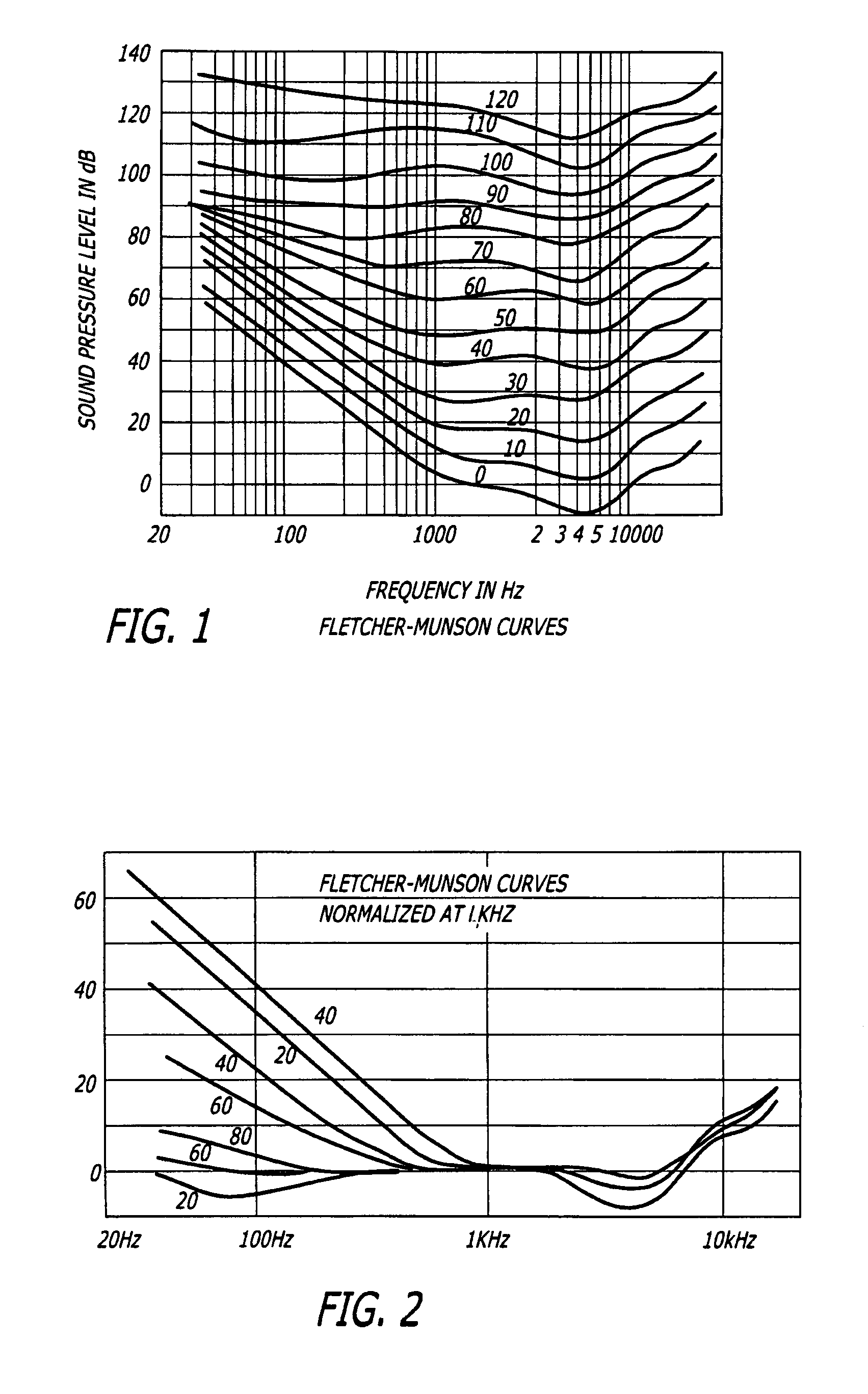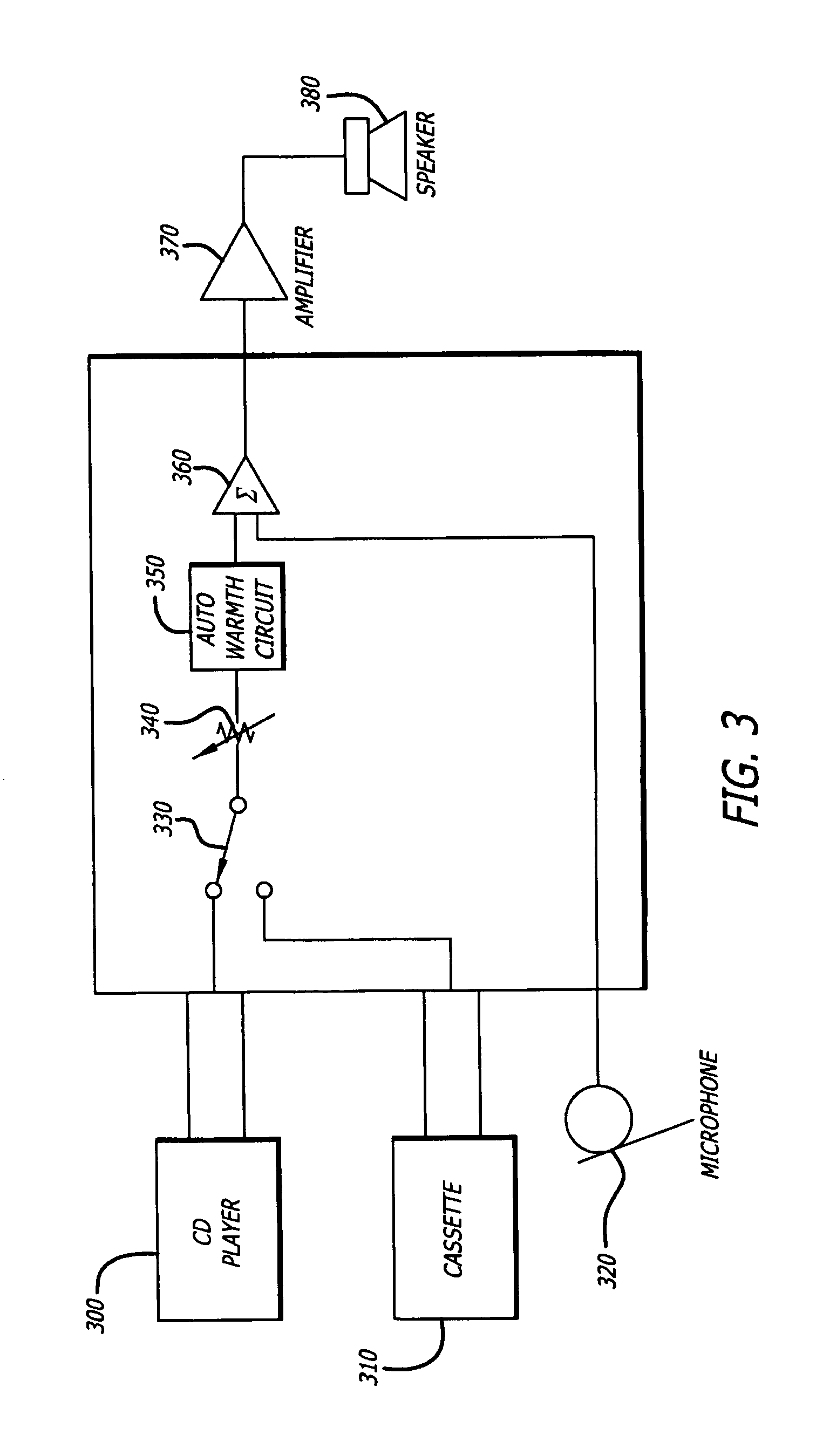System and method for varying low audio frequencies inversely with audio signal level
a low-frequency, inverse technology, applied in the field of audio speakers, can solve the problem that filters do not immediately cut-off frequencies, and achieve the effect of more accurate simulation of the fletcher-munson curv
- Summary
- Abstract
- Description
- Claims
- Application Information
AI Technical Summary
Benefits of technology
Problems solved by technology
Method used
Image
Examples
Embodiment Construction
[0037]FIG. 1 illustrates a set of well-known frequency domain relative level curves first developed by Fletcher and Munson in the early 1930's. These frequency domain relative level curves (equal loudness contours) relate to the frequency response of a human ear to the level of signals being heard. As the signal level decreases, research shows that the responsiveness to the signal by the human ear alters, in particular, in relation to this invention, responsiveness to bass frequencies decreases.
[0038]Referring to FIG. 2, a set of frequency domain relative level curves illustrates the results from the Fletcher-Munson curves after being ‘normalized’ at 1 kHz. Since the Fletcher-Munson curves of FIG. 1 are stable at 1 kHz, the curves were normalized at that frequency. The curves were normalized in order to determine the desired output characteristics for a circuit that performs according to the normalized curves. Thus, the filter circuit of the present invention was designed to perform...
PUM
 Login to View More
Login to View More Abstract
Description
Claims
Application Information
 Login to View More
Login to View More - R&D
- Intellectual Property
- Life Sciences
- Materials
- Tech Scout
- Unparalleled Data Quality
- Higher Quality Content
- 60% Fewer Hallucinations
Browse by: Latest US Patents, China's latest patents, Technical Efficacy Thesaurus, Application Domain, Technology Topic, Popular Technical Reports.
© 2025 PatSnap. All rights reserved.Legal|Privacy policy|Modern Slavery Act Transparency Statement|Sitemap|About US| Contact US: help@patsnap.com



